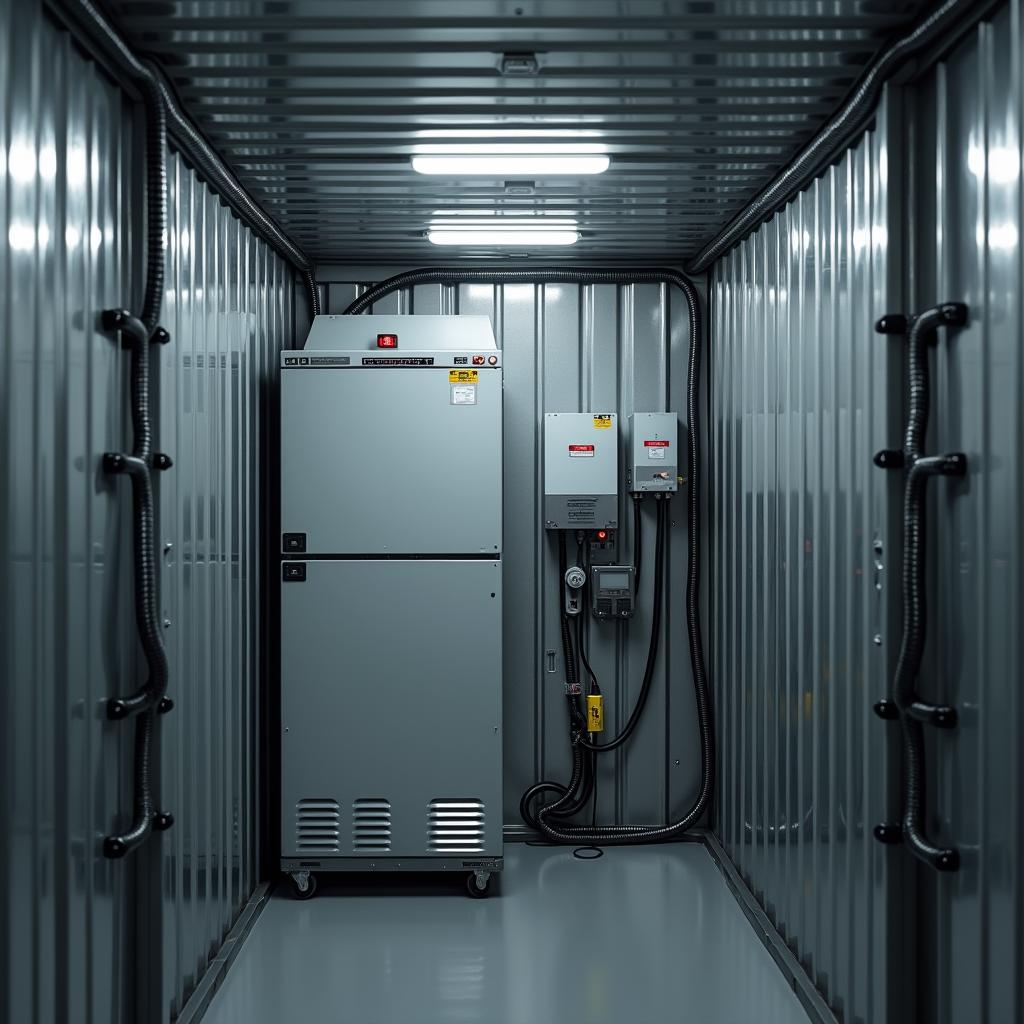In today’s competitive logistics landscape, temperature-sensitive cargo transportation demands precision, reliability, and real-time monitoring capabilities. The integration of Internet of Things (IoT) technology in refrigerated transport—commonly known as reefer monitoring—has revolutionized how companies track, manage, and protect perishable goods throughout the supply chain. As IoT refrigerated trucking solutions continue to evolve, businesses are discovering unprecedented opportunities to enhance operational efficiency, reduce waste, and ensure regulatory compliance.
Whether you’re transporting pharmaceuticals, fresh produce, frozen foods, or other temperature-sensitive items, implementing IoT in reefer monitoring provides the visibility and control necessary to maintain product integrity from origin to destination. This comprehensive guide explores the practical steps, considerations, and benefits of deploying IoT technology in refrigerated transport operations.
Understanding the Fundamentals of IoT in Refrigerated Transport
Before diving into implementation strategies, it’s essential to understand what IoT reefer monitoring entails. At its core, IoT in refrigerated transport connects physical devices—sensors, controllers, and monitoring equipment—to the internet, enabling seamless data collection, transmission, and analysis.
The basic architecture of an IoT reefer monitoring system includes:
- Sensors and data collection devices that measure temperature, humidity, door status, fuel levels, and other critical parameters
- Connectivity solutions that transmit data via cellular, satellite, or other communication networks
- Cloud-based platforms that store, process, and analyze the incoming data
- User interfaces that display actionable insights through dashboards, alerts, and reports
According to a report by MarketsandMarkets, the global refrigerated transport market is projected to grow significantly in the coming years, with IoT technology serving as a primary driver of this expansion. The ability to monitor refrigerated cargo in real-time provides logistics companies with unprecedented control over their cold chain operations.
Key Benefits of Implementing IoT in Reefer Monitoring
The advantages of integrating IoT technology into refrigerated transport extend far beyond basic temperature monitoring. Understanding these benefits can help justify the investment and guide implementation priorities.
Enhanced Product Quality and Safety
Temperature excursions can significantly impact product quality, especially for pharmaceuticals and perishable foods. IoT sensors provide continuous monitoring, allowing for immediate intervention when temperatures drift outside acceptable ranges. This proactive approach minimizes product degradation and potential safety risks.
For pharmaceutical shipments, where temperature control is critical for maintaining efficacy, IoT refrigerated trucking solutions offer validation and documentation that can help meet stringent regulatory requirements.
Reduced Spoilage and Waste
According to the Food and Agriculture Organization, approximately one-third of food produced globally is lost or wasted, with a significant portion occurring during transportation and storage. IoT monitoring can substantially reduce this waste by ensuring optimal conditions throughout transit.
By receiving immediate alerts about potential issues, fleet managers can dispatch maintenance teams or reroute shipments before cargo is compromised, resulting in significant cost savings and environmental benefits.
Improved Operational Efficiency
Beyond temperature monitoring, IoT devices can track various operational parameters such as fuel consumption, engine performance, and driver behavior. This comprehensive visibility enables companies to optimize routes, reduce fuel costs, and extend equipment lifespan.
Modern fleet management systems that incorporate IoT technology provide a holistic view of operations, allowing managers to make data-driven decisions that enhance overall efficiency and reduce operational costs.
Enhanced Compliance and Documentation
Regulatory requirements for transporting temperature-sensitive goods continue to become more stringent. IoT systems automatically generate and store compliance documentation, simplifying audits and reducing administrative burden.
Automated digital documentation systems create tamper-proof records that can be crucial for demonstrating adherence to food safety regulations, pharmaceutical good distribution practices (GDP), and other industry standards.
Step-by-Step Implementation Guide for IoT Reefer Monitoring
Successfully deploying IoT technology in refrigerated transport requires careful planning and execution. The following steps provide a roadmap for implementation:
Step 1: Assess Your Current Operations and Requirements
Before selecting specific technologies, conduct a thorough assessment of your existing operations:
- Identify the types of goods being transported and their specific temperature requirements
- Map current monitoring processes and identify gaps or inefficiencies
- Determine regulatory compliance requirements for your cargo types
- Evaluate existing fleet equipment and potential compatibility with IoT solutions
This assessment will provide the foundation for developing a tailored implementation strategy that addresses your organization’s unique needs.
Step 2: Select Appropriate Hardware Components
The effectiveness of your IoT reefer monitoring system depends largely on selecting the right hardware components:
Temperature and Humidity Sensors
Choose sensors with appropriate accuracy ranges for your cargo requirements. For pharmaceuticals, high-precision sensors (±0.5°C or better) are typically necessary, while produce transportation may tolerate slightly wider ranges.
Consider sensor placement carefully—multiple sensors may be needed to monitor different zones within a trailer, especially for mixed-load transportation.
Gateway Devices
Select gateway devices that collect data from various sensors and transmit it to your central platform. These devices should have:
- Reliable connectivity options (cellular, satellite, or both for redundancy)
- Sufficient battery life or power management for extended journeys
- Rugged design suitable for transport environments
- Local storage capability for areas with poor connectivity
Additional Monitoring Devices
Depending on your specific needs, consider additional monitoring capabilities:
- Door sensors to detect unauthorized access or improper closure
- Location tracking devices for real-time position monitoring
- Fuel level sensors to optimize refueling schedules
- Engine diagnostic sensors to predict maintenance needs
Step 3: Implement Robust Connectivity Solutions
Reliable data transmission is critical for effective reefer monitoring. Consider these connectivity options:
- Cellular connectivity (4G/5G): Provides good coverage in populated areas but may have gaps in remote locations
- Satellite connectivity: Offers global coverage but typically comes with higher costs and potentially lower data rates
- Hybrid solutions: Combine cellular and satellite for optimal coverage and cost-efficiency
Many organizations are now implementing innovative connectivity solutions that automatically switch between different networks based on availability and cost, ensuring continuous monitoring regardless of location.
Step 4: Select and Configure Your Cloud Platform
The cloud platform serves as the central nervous system of your IoT reefer monitoring solution. Key considerations include:
- Scalability: Ability to accommodate growing fleet sizes and data volumes
- Security: Robust data protection measures including encryption and access controls
- Analytics capabilities: Tools for processing and deriving insights from collected data
- Integration options: Compatibility with existing transportation management systems, ERP platforms, and customer portals
Many providers offer specialized fleet management software with built-in analytics and reporting capabilities designed specifically for refrigerated transport applications.
Step 5: Develop Alert Systems and Response Protocols
Establish clear protocols for handling alerts and exceptions:
- Define temperature thresholds and alert parameters based on cargo requirements
- Create escalation procedures for different types of alerts
- Assign responsibility for monitoring and responding to alerts
- Develop contingency plans for common scenarios (e.g., refrigeration system failure, extended power loss)
Effective alert systems should balance sensitivity with practicality—too many alerts can lead to “alert fatigue,” while insufficient monitoring may miss critical issues.
Step 6: Train Personnel and Integrate into Operations
The success of IoT implementation depends largely on how well it’s integrated into daily operations:
- Provide comprehensive training for drivers, dispatchers, and management personnel
- Develop clear documentation and quick-reference guides
- Establish procedures for routine system checks and maintenance
- Create feedback mechanisms to continuously improve the system
Consider a phased implementation approach, starting with a pilot program before full-scale deployment, to identify and address operational challenges.
Overcoming Common Implementation Challenges
While the benefits of IoT in reefer monitoring are substantial, implementation can present several challenges:
Connectivity Issues in Remote Areas
Long-haul transportation often involves routes through areas with limited cellular coverage. To address this challenge:
- Implement store-and-forward capabilities that save data locally when connectivity is unavailable
- Consider satellite connectivity for critical shipments that traverse remote regions
- Use predictive analytics to anticipate potential connectivity gaps and plan accordingly
Integration with Legacy Systems
Many transportation companies operate with established systems that may not easily connect with new IoT solutions. To overcome this:
- Select IoT platforms with robust API capabilities for integration
- Consider middleware solutions that can bridge legacy and modern systems
- Develop phased migration plans that allow for gradual transition
The role of IoT in American trucking continues to evolve, with increasing emphasis on interoperability between different systems and platforms.
Data Security and Privacy Concerns
As IoT systems collect more data, security becomes increasingly important:
- Implement end-to-end encryption for all data transmission
- Establish strong access control policies and authentication mechanisms
- Regularly update firmware and software to address potential vulnerabilities
- Develop clear data retention and privacy policies that comply with relevant regulations
Working with reputable vendors who prioritize security can significantly reduce these risks.
Future Trends in IoT Reefer Monitoring
The landscape of IoT refrigerated trucking continues to evolve rapidly. Stay ahead by understanding these emerging trends:
Artificial Intelligence and Predictive Analytics
AI-powered systems are moving beyond simple monitoring to predict potential issues before they occur:
- Predictive maintenance alerts based on equipment performance patterns
- Route optimization that considers weather conditions and traffic patterns
- Demand forecasting that helps companies allocate refrigerated assets more efficiently
These advanced analytics capabilities can transform reactive monitoring into proactive management, further reducing risks and costs.
Blockchain for Supply Chain Transparency
Blockchain technology is increasingly being combined with IoT to create immutable records of temperature data and handling conditions:
- Tamper-proof documentation for regulatory compliance
- Enhanced traceability for food safety and pharmaceutical validation
- Smart contracts that can automate payment and liability determinations based on monitoring data
According to IBM Food Trust, blockchain-enabled supply chains can significantly improve transparency and traceability for temperature-sensitive products.
Edge Computing for Real-Time Processing
Edge computing—processing data closer to the source rather than sending everything to the cloud—is becoming increasingly important in IoT refrigerated transport:
- Reduced latency for critical alerts and decisions
- Lower bandwidth requirements for data transmission
- Enhanced capability to function in areas with limited connectivity
This trend enables more sophisticated on-board analytics and decision-making capabilities, further enhancing the value of IoT in refrigerated transport.
Conclusion: Transforming Refrigerated Transport Through IoT Implementation
Implementing IoT in reefer monitoring represents a significant opportunity to transform refrigerated transport operations. By providing real-time visibility, enhancing product protection, and enabling data-driven decision-making, IoT technology helps companies meet the growing demands for efficient, reliable cold chain logistics.
The journey toward full IoT implementation requires careful planning, appropriate technology selection, and thoughtful integration with existing operations. However, the potential returns—reduced waste, enhanced compliance, improved customer satisfaction, and operational efficiencies—make this investment increasingly essential for competitive refrigerated transport operations.
As IoT refrigerated trucking solutions continue to evolve, companies that embrace these technologies will be well-positioned to deliver superior service, maintain product integrity, and operate more sustainably in an increasingly demanding marketplace.
Ready to transform your refrigerated transport operations with IoT technology? Our team of specialists can help you design and implement a customized solution that addresses your specific needs and challenges. Contact us today to schedule a consultation and take the first step toward a more efficient, reliable cold chain.
Frequently Asked Questions
What is the typical return on investment for IoT reefer monitoring systems?
While ROI varies based on fleet size, cargo value, and operational factors, many companies report a payback period of 12-18 months. The primary financial benefits come from reduced product loss, improved fuel efficiency, extended equipment lifespan, and enhanced labor productivity. For high-value pharmaceutical shipments, the ROI can be even more rapid due to the significant cost of temperature excursions.
How does IoT reefer monitoring help with regulatory compliance?
IoT systems provide automated, continuous temperature recording that satisfies requirements for various regulations including FDA’s Food Safety Modernization Act (FSMA), EU Good Distribution Practice (GDP) for pharmaceuticals, and HACCP food safety protocols. The systems generate tamper-proof records that document temperature conditions throughout transit, simplifying compliance verification and audit processes.
Can IoT monitoring systems be retrofitted to existing refrigerated trailers?
Yes, most IoT monitoring solutions can be installed on existing refrigerated assets without major modifications. Wireless sensors, battery-powered gateways, and aftermarket telematics devices make retrofitting practical and cost-effective. However, newer refrigeration units often provide more integration options and may offer enhanced capabilities when paired with IoT systems.
What connectivity options work best for long-haul refrigerated transport?
For long-haul routes, especially those traversing rural areas, a hybrid connectivity approach is typically most effective. This combines cellular (4G/5G) coverage for populated areas with satellite connectivity as backup for remote regions. Advanced systems automatically switch between these options based on availability, ensuring continuous monitoring regardless of location.
How can small to medium-sized fleets implement IoT reefer monitoring without significant upfront investment?
Many IoT solution providers now offer subscription-based models (IoT-as-a-Service) that reduce initial capital expenditure. These services typically include hardware, software, connectivity, and maintenance for a monthly fee. Smaller fleets can also implement in phases, starting with critical routes or high-value cargo, then expanding as ROI is demonstrated. Some providers also offer financing options specifically designed for transportation technology upgrades.







